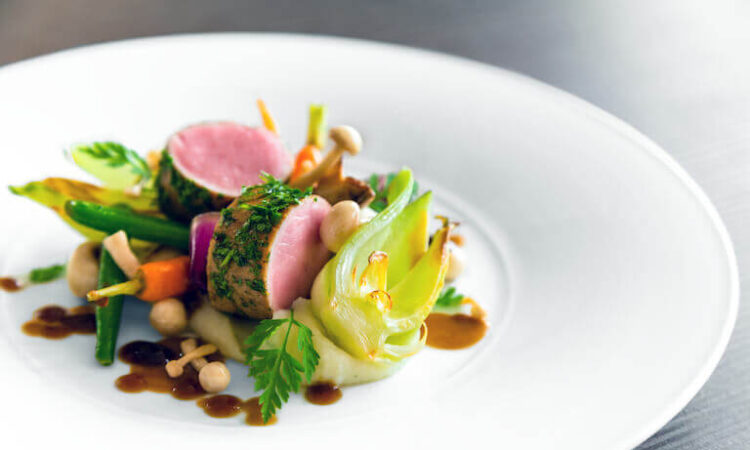
In the world of gastronomy, the term “fusion cuisine” has become more than just a buzzword; it’s a revolutionary culinary movement that intertwines the essence of diverse culinary traditions to create something uniquely tantalising.
Fusion cuisine is not merely about mixing ingredients from different cultures; it’s an art form that involves a careful blending of flavours, techniques, and presentation styles, culminating in a dining experience that is as visually stunning as it is delicious.
The Art of Fusion on a Plate
Fusion cuisine is akin to a painter blending colours on a canvas, with chefs using their plates as the medium to showcase their creativity and culinary prowess. This approach to cooking allows for a harmonious blend of the familiar with the exotic, creating dishes that are both comforting and intriguing. It’s about striking the perfect balance between different culinary traditions without overshadowing the unique characteristics of each.
For example, imagine a dish that combines the delicate flavours of Japanese sushi with the bold spices of Mexican cuisine. The result could be a spicy tuna roll with a twist of avocado and jalapeño, served with a side of tangy salsa and wasabi. This combination might sound unorthodox, but it’s the essence of fusion cuisine – unexpected, yet harmonious.
Why Food Presentation is So Important
In fusion cuisine, why food presentation is so important is not just about aesthetics; it’s a critical element that bridges the gap between different culinary traditions. A well-presented dish does more than just appeal to the eyes; it tells a story, invokes emotions, and sets the stage for the sensory experience that follows. The way a dish is plated can reflect the cultural heritage it represents while also showcasing the chef’s innovative approach to blending these traditions.
The presentation in fusion cuisine often involves a playful yet sophisticated arrangement of ingredients, highlighting the colours, textures, and shapes that represent each culinary tradition. It’s about creating a visual harmony that complements the flavours and aromas of the dish.
The Cultural Significance of Fusion Cuisine
At its core, fusion cuisine is more than just food; it’s a representation of cultural diversity and acceptance. By blending different culinary traditions, chefs are not only creating innovative dishes but also fostering a deeper understanding and appreciation of diverse cultures. This aspect of fusion cuisine resonates deeply in our increasingly interconnected world, where food can be a powerful medium for cultural exchange.
Bon Appetit!
Fusion cuisine, with its innovative blending of culinary traditions, offers a unique and exciting dining experience. It challenges the norms of traditional cooking, encourages culinary creativity, and respects the cultural heritage behind each dish. The importance of food presentation in fusion cuisine cannot be overstated, as it plays a pivotal role in uniting diverse culinary elements into a cohesive, visually appealing, and delectable masterpiece.
By embracing fusion cuisine, we open our palates to a world of flavours, where every dish tells a story of cultural harmony and culinary innovation.
Top of Form

